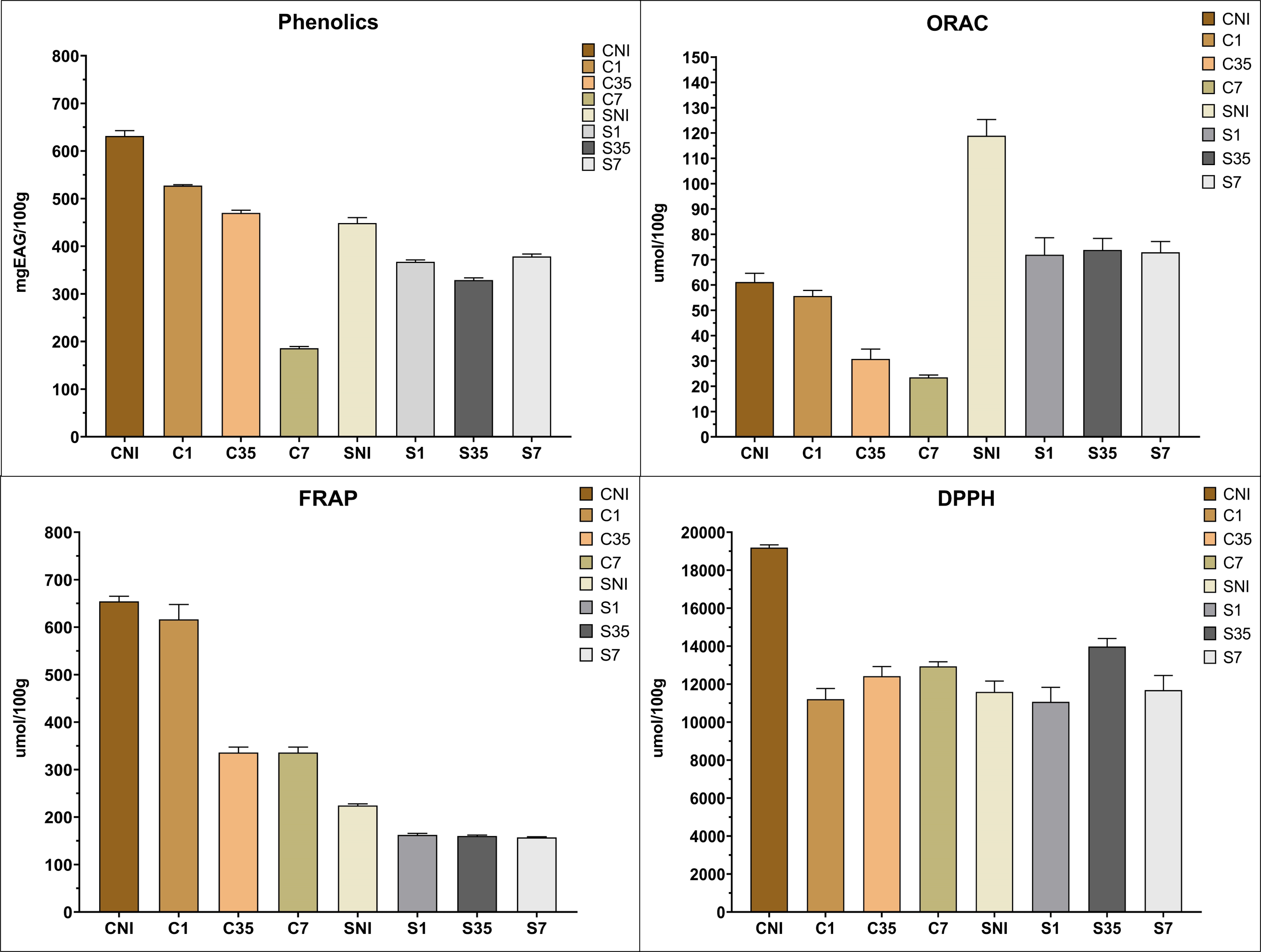IMPACT OF IONIZING RADIATION IN ANTIOXIDANT CAPACITY IRRADIATED SAPOTI PEEL AND SEED FLOUR
Bianca G. Negrão1, Luz M. Rondan-Flores1, João Pedro A. A. Barros1, Ana Sofia M. C. Saliba2, Daili Barreira1, Severino M. Alencar2, Anna Lucia C.H. Villavicencio1.
1Centro de Tecnologia das Radiações, São Paulo, SP, Brasil., Instituto de Pesquisas Energéticas e Nucleares (IPEN/CNEN-SP), São Paulo, Brazil; 2Escola Superior de Agricultura Luiz de Queiroz (ESALQ), Universidade São Paulo, SP, Brasil, São Paulo, Brazil
Sapoti (Manilkara zapota) is a tropical fruit known for its unique sweetness and distinctive flavor. In addition to its succulent pulp, the sapoti peel, often overlooked, harbors a variety of phytochemicals, including polyphenols, phenolic compounds, and tannins. These components not only contribute to the overall composition of the fruit but also provide antioxidant properties and potential health benefits. Utilizing the peel and seed is crucial, not only to minimize waste but also to optimize the nutritional and functional value of the fruit. This sustainable approach acknowledges the potential benefits each part of the sapoti can offer, promoting a more efficient and comprehensive use of food resources. Thus, in this study we investigated the influence of ionizing radiation dose on the concentration of these compounds. For this purpose, samples of sapoti peel and seed were subjected to three doses of ionizing radiation (1, 3.5, and 7 kGy). DPPH, FRAP, total phenolics, and ORAC methods were used to provide information on the overall antioxidant capacity of each sample, encompassing a range of antioxidant compounds. The results (Fig. 1) reveal that the increase in radiation doses had a more pronounced impact on the antioxidant capacity of sapoti peel samples compared to seed samples. The phenolics analyses highlighted significant variations in antioxidant levels across different studies, emphasizing the importance of considering various methodologies and conditions. It was also observed that doses higher than 3.5 kGy may cause significant alterations in the phytochemicals present in the sapoti residue sample.
Fig. 1. Antioxidant capacity methods in sapoti seed and peel flour
